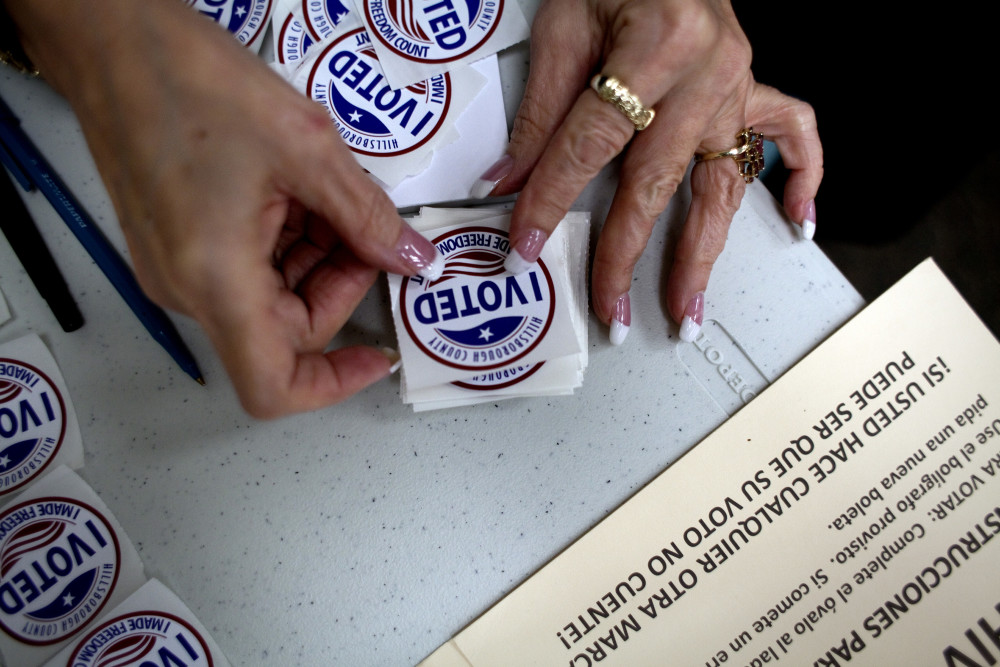By Rene Stutzman
Orlando Sentinel.
Orlando resident Mattie Pearl Parramore carries her voting card in her pocketbook.
She was born 100 years ago, before women had the right to vote.
“I don’t get around well, and I don’t stand up so well,” she concedes, but she still votes.
Last year, “I voted absentee ballot,” she said.
Some Americans this month quietly celebrated the 95th anniversary of the 19th Amendment to the U.S. Constitution, the measure that gave women the right to vote.
Parramore is one of 2,487 women identified as active, registered voters in Orange, Seminole, Osceola and Lake counties who were born before its passage, according to the Florida Division of Elections.
She voted for the first time in the 1930s at an Orlando fire station — now demolished — at the corner of Central Boulevard and Parramore Avenue, she said. Franklin D. Roosevelt was president, and she was in her 20s, working as a cook at a Jewish delicatessen on Pine Street downtown.
She had been 5 years old, growing up on a farm near Byromville, Ga., a rural county in the center of the state, when the 19th Amendment was ratified.
“Never heard my parents mention voting,” she said.
She now keeps her voting card close at hand.
78M female voters
In the United States, the number of women who are registered to vote now exceeds that of men, 78 million versus 68 million, according to the National Women’s Political Caucus.
“We talk about the right to vote as if everybody’s always had that,” said Michele Levy, co-president of the League of Women Voters of Orange County, “but in America, the first people to have the right to vote were white men who owned property.”
In 1828 voting rights were extended to white men who did not own property. Then in 1870 they were broadened to include black men. But women had to wait 50 more years.
After the Civil War women in some jurisdictions, especially in Western states and territories, won the right to vote. Wyoming was an early adopter.
But Congress did not agree to add it as an amendment to the Constitution until 1919.
The measure then required 36 states to ratify it before it could be added to the Constitution. It was on the verge of failing, just one state shy, when the Tennessee House of Representatives approved it by a one-vote margin.
That was Aug. 18, 1920. The following week, on Aug. 26, it was formally added to the U.S. Constitution.
“Nineteen-twenty, it really wasn’t that long ago that women didn’t have the right to vote,” said Levy.
And they didn’t get it without a fight.
Ask Orlando-area philanthropist Harriet Lake, 93.
“One night I was surfing around, and I saw this film,” she said.
It was about Alice Paul and Lucy Burns, two militant suffragettes who led protest marches in Washington, D.C., in 1917 and were arrested, locked up, then force-fed when they stopped eating.
“People just assume that women were always allowed to vote,” Lake said. “It’s simply not true. We went to jail. We went on hunger strikes.”
Lake threw a $40,000 party five years ago to celebrate the 90th anniversary of the amendment.
Eight hundred women showed up, many dressed as suffragettes.
“I know what I wore,” Lake said, “a mini royal-blue dress with a sash that said, ‘Votes for Women’ across the bosom.”
“I just thought we needed attention,” she said. “I wanted women to vote. I want everybody to vote.”
Two years ago, she co-hosted another party to celebrate the same thing, this time as a fundraiser for the Central Florida Women’s Resource Center.
“I’m an activist. I can’t help myself,” she said.
And for the 100th anniversary?
Lake has no plans to throw a party, she said, “but I’d love to celebrate. I’d go on a stretcher. I’d be in an ambulance. … It would be great.”














































































































































































































































































































































































